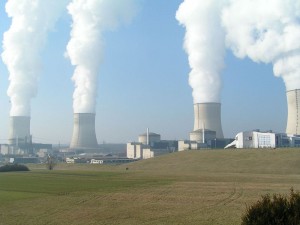 It’s the myth on which the ongoing nuclear renaissance is built: that nuclear power is one of the solutions to climate change. But now the case for nuclear power as a low carbon energy source to replace fossil fuels has been challenged in a new report by Australian academics.
It’s the myth on which the ongoing nuclear renaissance is built: that nuclear power is one of the solutions to climate change. But now the case for nuclear power as a low carbon energy source to replace fossil fuels has been challenged in a new report by Australian academics.
It suggests greenhouse emissions from the mining of uranium – on which nuclear power relies – are on the rise. Availability of high-grade uranium ore is set to decline with time, it says, making the fuel less environmentally friendly and more costly to extract.
A significant proportion of greenhouse emissions from nuclear power stem from the fuel supply stage, which includes uranium mining, milling, enrichment and fuel manufacturing.
Lead author Gavin Mudd, from Monash University in Australia, said “Yes, we can probably find new uranium deposits, but to me that’s not the real issue. The real issue is: ‘what are the environmental and sustainability costs?’

This is the kind of problem that arises from using secondary or even tertiary sources. If you read Dr. Mudd’s report, what you’d see is that it shows uranium supplies and ore quality are holding even. You’d also see that the report is a summary of recent history, not a prediction of the future. As such, it takes no account of advanced fuel cycles.
Here’s what Dr. Mudd actually says:
“In summary, the extent of economically recoverable uranium, although somewhat uncertain, is clearly linked to exploration effort, technology, and economics but is inextricably linked to environmental costs such as energy, water, and chemicals consumption, greenhouse gas emissions, and broader social issues. These crucial environmental aspects of resource extraction are only just beginning to be understood in the context of more complete life cycle analyses of the nuclear chain and other energy options. There still remains incomplete reporting however, especially in terms of data consistency among mines and site-specific data for numerous individual mines and mills, as well as the underlying factors controlling differences and variability. It is clear that there is a strong sensitivity of energy and water consumption and greenhouse gas emissions to ore grade, and that ore grades are likely to continue to decline gradually in the medium- to long-term. These issues are critical to understand in the current debate over nuclear power, greenhouse gas emissions, and climate change, especially with respect to ascribing sustainability to such activities as uranium mining and milling.”